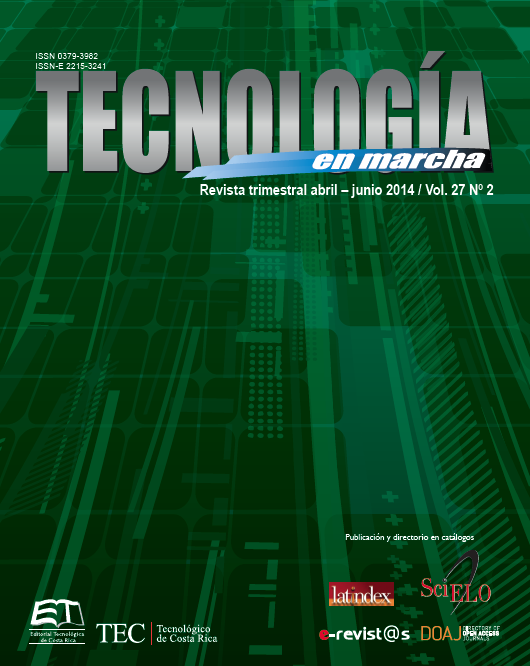Degradation and decoloration of contaminated water with textile dyes using advanced oxidation processes
Main Article Content
Abstract
The degradation and decolorization of azo dye COLRON RED SD3B as model pollutant by H2O2/ UV and H2O2/Fe2+/UV processes were investigated. The effects of dye concentration, solution pH, and Fe2+ and H2O2 dosages were studied using Taguchi´s experimental design method. Photo-Fenton process showed to be more efficient than H2O2/UV process for the color removal and degradation of the dye. The conditions that produced higher degradations rates were pH=2, dye concentration of 100 ppm, ferrous dosage of 80 ppm and hydrogen peroxide dosage of 102 ppm (3.0 mmol/L). Under these conditions, 65.5 % COD reduction and 77.0 % decolorization of the azo dye wastewater were achieved after one hour of treatment.
Article Details
Los autores conservan los derechos de autor y ceden a la revista el derecho de la primera publicación y pueda editarlo, reproducirlo, distribuirlo, exhibirlo y comunicarlo en el país y en el extranjero mediante medios impresos y electrónicos. Asimismo, asumen el compromiso sobre cualquier litigio o reclamación relacionada con derechos de propiedad intelectual, exonerando de responsabilidad a la Editorial Tecnológica de Costa Rica. Además, se establece que los autores pueden realizar otros acuerdos contractuales independientes y adicionales para la distribución no exclusiva de la versión del artículo publicado en esta revista (p. ej., incluirlo en un repositorio institucional o publicarlo en un libro) siempre que indiquen claramente que el trabajo se publicó por primera vez en esta revista.

